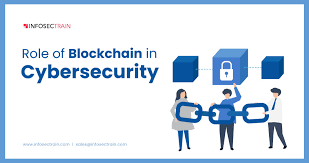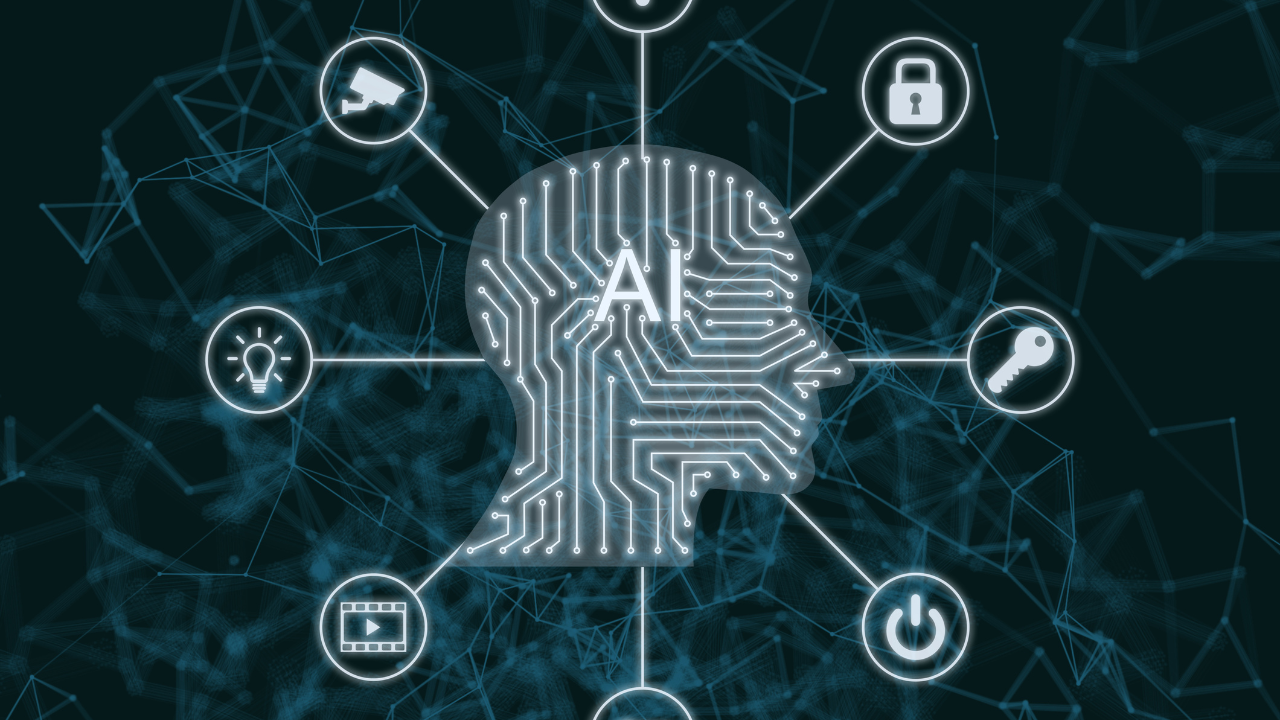



The Role of Blockchain in Cybersecurity
Blockchain, the underlying technology behind cryptocurrencies like Bitcoin and Ethereum, has evolved far beyond its original use case. Today, it is being explored for a variety of applications, including cybersecurity. While blockchain is widely recognized for its ability to securely store and validate transactions, it also has significant potential to address some of the most pressing cybersecurity challenges.
In this article, we’ll explore how blockchain technology can enhance cybersecurity, its benefits, and the challenges associated with its implementation.
Blockchain is a decentralized, distributed ledger technology that records transactions across multiple computers. Each record (or "block") contains a set of transactions, and each new block is linked to the previous one, creating a chain. This decentralized structure ensures that the data cannot be altered retroactively, providing an immutable record.
Some key features of blockchain that make it relevant to cybersecurity include:
Decentralization: No single point of failure, reducing the risk of attacks on centralized servers.
Immutability: Once data is written to the blockchain, it cannot be easily changed or tampered with, making it highly secure.
Transparency: Transactions are visible to all participants, fostering trust and accountability.
Cryptographic Security: Blockchain uses cryptography to secure transactions and user identities.
One of the most critical aspects of cybersecurity is securing data from breaches and unauthorized access. Traditional data storage solutions rely on centralized servers, which are vulnerable to attacks like DDoS (Distributed Denial of Service) or data breaches. If a hacker gains access to a central server, they could steal sensitive data or disrupt services.
With blockchain-based storage, data is distributed across a network of nodes rather than a single server. This decentralization significantly reduces the risk of a single point of failure. Even if one node is compromised, the data remains protected across the rest of the network.
For example, projects like Filecoin and Storj use blockchain to enable decentralized cloud storage, where data is broken into small pieces, encrypted, and distributed across many nodes, making it almost impossible for hackers to access or tamper with it.
Identity theft and unauthorized access are significant cybersecurity threats. Traditional systems rely on usernames and passwords to authenticate users, which can be easily stolen or compromised. Blockchain offers a more secure way of handling identity and access management.
With blockchain-based identity systems, personal data is stored in a decentralized ledger, with users having full control over their identity. By using cryptographic keys (private keys) for authentication, blockchain makes it much harder for hackers to impersonate legitimate users. Moreover, blockchain enables the concept of self-sovereign identity (SSI), where individuals can manage and share their personal information without relying on a central authority.
For instance, uPort and Sovrin are examples of decentralized identity platforms that use blockchain to provide secure and verifiable identity management.
Smart contracts, which are self-executing contracts with the terms of the agreement directly written into code, can also play a crucial role in cybersecurity. These contracts are stored and executed on a blockchain, ensuring that they are tamper-proof and transparent.
In terms of cybersecurity, smart contracts can automate many processes, reducing human errors and improving trust between parties. Since the terms of the contract are public and immutable, it is impossible to alter them once deployed, reducing the risk of fraud.
For example, blockchain-based payment systems, such as those developed by Ripple and Ethereum, use smart contracts to securely execute financial transactions. These systems are increasingly being integrated into cybersecurity applications to ensure secure, automated transactions without the need for intermediaries.
Blockchain can also be used to secure communication channels. With end-to-end encryption in place, messages or files sent via a blockchain system can be encrypted and only accessible to the intended recipient. Blockchain’s immutable nature ensures that no one can alter or intercept messages in transit, offering a secure alternative to traditional communication systems.
Blockchain’s cryptographic protocols ensure that messages are authenticated and cannot be tampered with, which is particularly beneficial in environments where confidentiality and integrity are paramount.
Blockchain can improve cybersecurity threat detection by providing real-time visibility into the activities within a network. Since blockchain creates an immutable ledger of all transactions, security professionals can analyze the chain to detect anomalies and potential threats. Blockchain’s transparency makes it easier to trace suspicious activity and attribute attacks to specific entities.
For instance, blockchain’s ability to create tamper-proof logs is useful for identifying malicious actions such as insider threats or unauthorized access attempts. Additionally, these logs can serve as evidence for forensic investigations after a security breach occurs.
Blockchain can be applied to detect and mitigate malware. Since blockchain offers a decentralized ledger with transparent, immutable records, it can be used to track the provenance of software applications and ensure their authenticity. By storing software hashes on a blockchain, users can verify the integrity of applications before downloading them, preventing the installation of malicious software.
For example, a blockchain-based system could verify that software updates come from trusted sources, making it harder for attackers to distribute malware disguised as legitimate software updates.
Enhanced Security: Blockchain’s cryptographic nature and decentralization make it much harder for attackers to tamper with data or compromise systems.
Immutability: Once data is recorded on the blockchain, it cannot be altered or deleted, making it ideal for secure record-keeping.
Transparency and Trust: Blockchain’s transparent nature enables all participants to view the same data, fostering trust and accountability.
Reduced Fraud and Manipulation: With blockchain, it’s difficult to manipulate transaction data, making it harder for attackers to commit fraud.
Resilience to Attacks: Decentralized storage and distribution of data reduce the risk of a single point of failure, making it more resilient to cyberattacks.
While blockchain offers significant cybersecurity benefits, there are challenges to its widespread adoption:
Scalability: Blockchain networks can face scalability issues, especially in systems with a high volume of transactions. This can slow down processing times and reduce efficiency.
Energy Consumption: Some blockchain networks (like Bitcoin) consume significant amounts of energy due to their proof-of-work consensus mechanisms. This may hinder the adoption of blockchain in certain industries.
Complexity: Implementing blockchain-based solutions for cybersecurity can be complex, requiring specialized knowledge and infrastructure.
Regulatory Concerns: The decentralized nature of blockchain can pose regulatory challenges, particularly when it comes to data privacy laws and compliance.
Adoption and Integration: Many legacy systems may not be compatible with blockchain technology, requiring significant changes to existing infrastructure.
Blockchain technology is poised to play a significant role in improving cybersecurity, offering a range of benefits such as secure data storage, tamper-proof transaction records, enhanced identity management, and secure communication. However, its widespread adoption is still limited by scalability issues, regulatory concerns, and integration challenges.
As blockchain technology continues to evolve, it will likely become a more integral part of the cybersecurity landscape, helping businesses and individuals safeguard their digital assets, enhance transparency, and combat the growing number of cyber threats. However, organizations considering blockchain for cybersecurity should carefully assess its suitability for their needs and understand the potential limitations and challenges.
#trending #latest

University Internships That Help You Get a Job After Graduation... Read More.

Is It Smarter to Start at a Community College... Read More.
 Fake posts hit Czech PM Fiala's X
Fake posts hit Czech PM Fiala's X
Fake posts disrupt Czech PM Fiala's X account security
 Switzerland Tightens Export Rules
Switzerland Tightens Export Rules
Switzerland expands export controls on dual-use goods
 Google unveils Ironwood AI chip
Google unveils Ironwood AI chip
Google introduces Ironwood chip to accelerate AI tasks & apps
 TSMC Q1 revenue up 42%
TSMC Q1 revenue up 42%
TSMC sees 42% revenue surge in Q1, surpassing forecasts
 Amazon CEO Outlines AI Vision
Amazon CEO Outlines AI Vision
Amazon CEO reveals AI investment plans in new letter
 Osaka Hosts World Expo 2025
Osaka Hosts World Expo 2025
Japan blends tech and culture at Osaka Expo 2025 launch
 A16z Plans Big Bet on AI Startup
A16z Plans Big Bet on AI Startup
A16z may lead huge round in ex-OpenAI CTO’s new AI firm.
© MyEduGoal. All Rights Reserved. Design by markaziasolutions.com